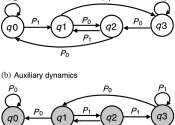Biomedical engineers teach bacteria to count
Biomedical engineers at Boston University have taught bacteria how to count. Professor James J. Collins and colleagues have wired a new sequence of genes that allow the microbes to count discrete events, opening the door ...







